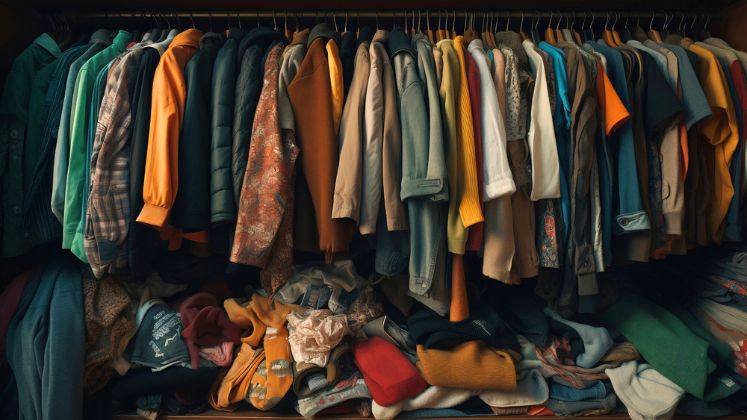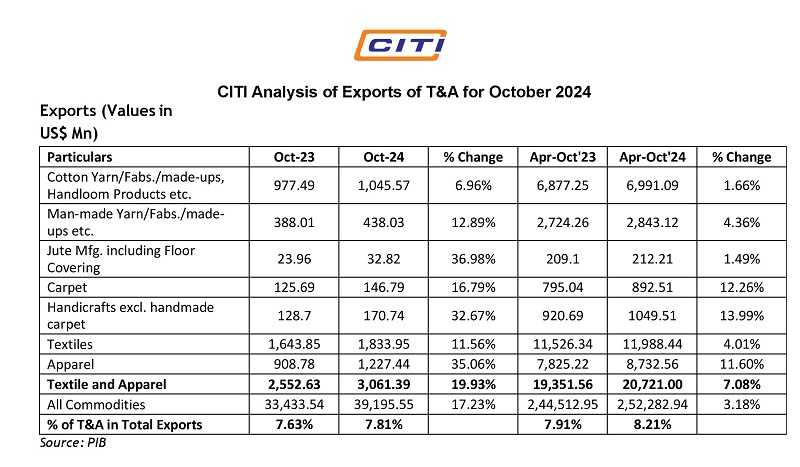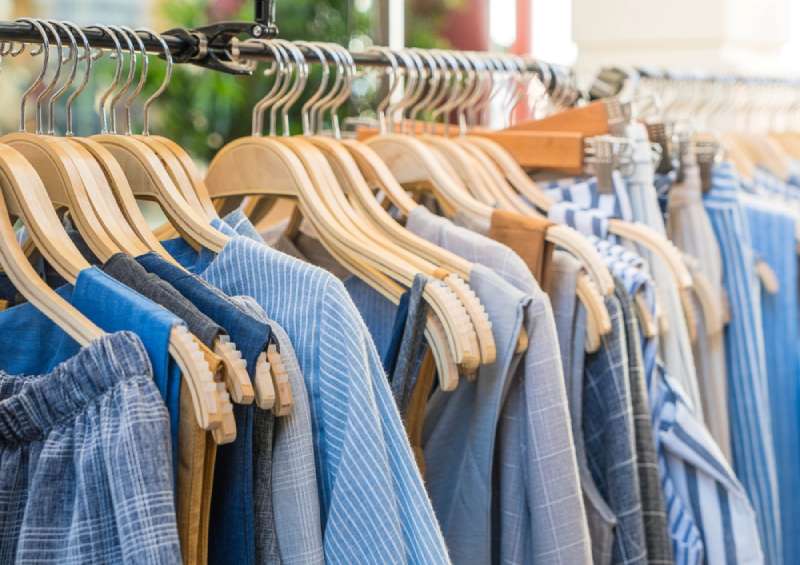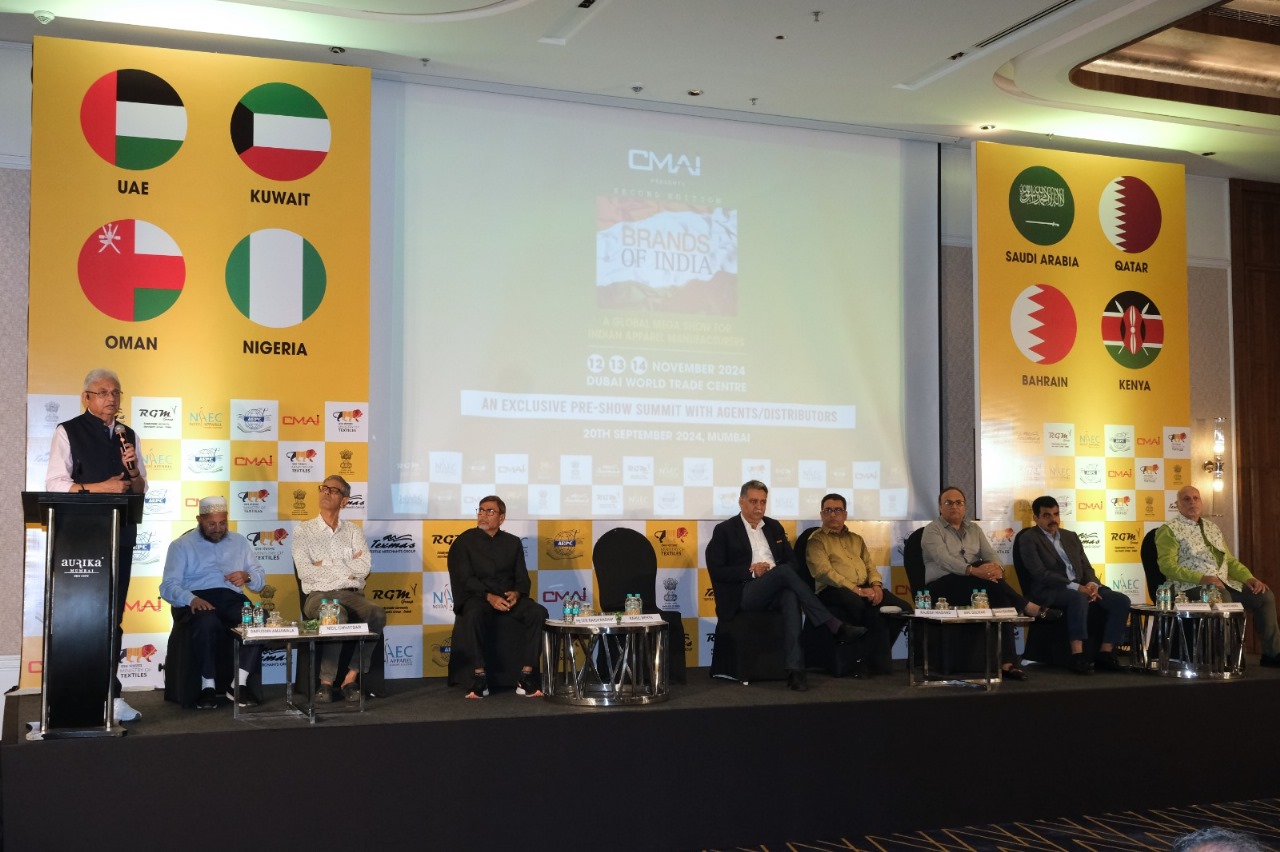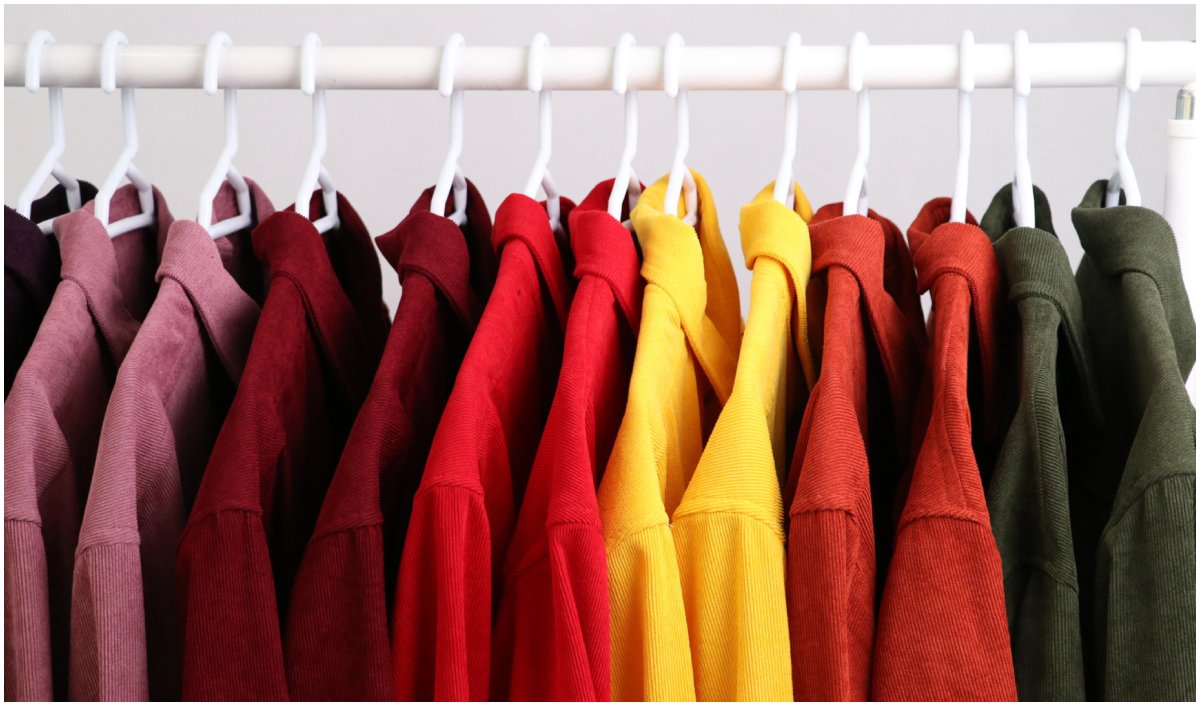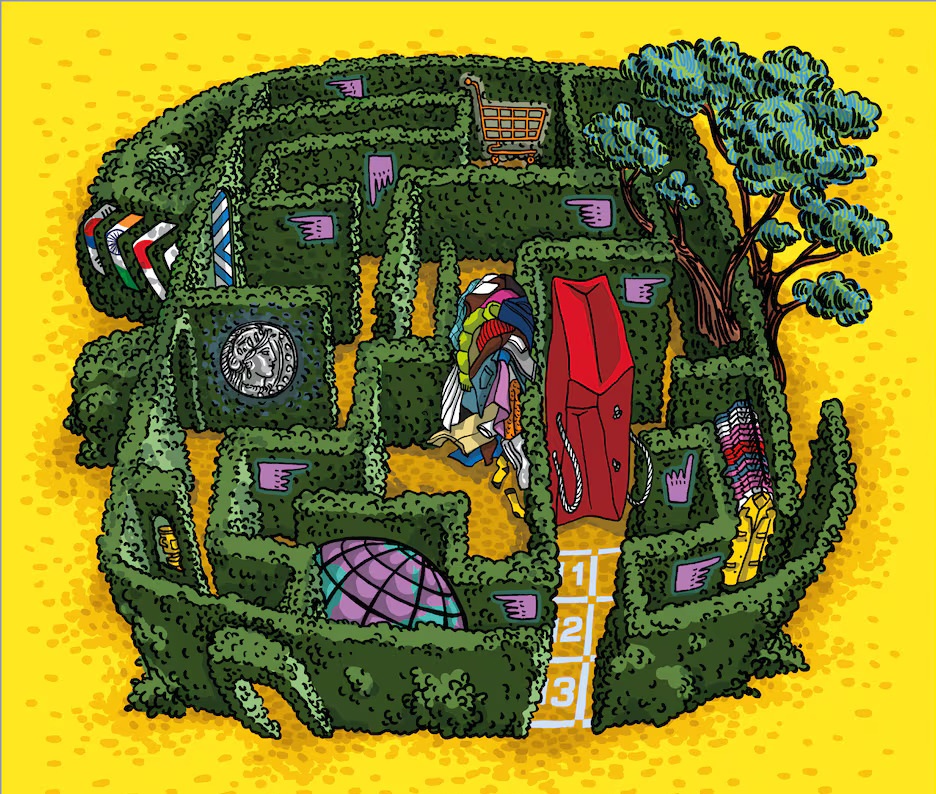FW
Fast fashion giant H&M plans to launch a co-branded collection at the Shanghai Fashion Week in October 2024.
To be launched in collaboration with the Chinese designer brand Garçon by Garçon, the collection titled, ‘Le Soleil The Sun,’ will feature women’s wear, men’s wear, unisex items and accessories. The collection blends ancient Greek and classical Persian influences form the 5th century BC with traditional Eastern aesthetics.
Founded by designer Tang Dayun, Garçon by Garçon is known for its unique visual storytelling that merges Eastern and Western narratives, scroll drawings, and mythological techniques.
Dayun hopes, thenew collection will bring a fresh perspective to the public's wardrobes, becoming a staple in everyday life, and symbolising ‘everyone’s sun.’
The collection also aims to highlight and support the creativity of local design talents, bringing more attention to the new generation of Chinese fashion designers.
Confederation of Indian Textile Industry (CITI) alongwith International LabourOrganisation (ILO) has launched a new initiative to support cotton farmers in the country.
Through this collaboration, CITI and the ILO aim to raise awareness about Fundamental Principles and Rights at Work (FPRW), specifically targeting small and marginal farmers and workers.
The collaboration seeks to facilitate knowledge sharing and provide technical support for implementing FPRW-related policies and programs. The initiative will enhance access to social protection schemes, empowering vulnerable families involved in cotton cultivation, according to a joint media release from the two organisations.
The initial focus of the joint activities will be on five districts in Madhya Pradesh, a significant region for organic and Extra-Long Staple (ELS) cotton production. The goal is to improve the overall well-being of cotton farmers and workers in these areas.
For the last 54 years, CITI, through its extension arm, the Cotton Development and Research Association (CDRA), has been working to improve the yield and quality of cotton by creating awareness of the best agronomic practices and equipping farmers with the latest technologies in production, plant protection, and nutrient management. Throughout its journey, CITI-CDRA has positively impacted cotton productivity, farmer income, soil health, and market linkage, says, T Rajkumar, Chairman, CITI - Standing Committee on Cotton.
CITI-CDRA is already operational in Maharashtra, Rajasthan, and Madhya Pradesh, playing a crucial role in the Pilot Project on Cotton. A collaborative effort between the Ministry of Agriculture and the Ministry of Textiles, this project aims to enhance cotton yield through improved agronomic practices and technological interventions such as the High-Density Planting System (HDPS) and closer spacing techniques.
Renewable chemicals company Avantium has teamed up with textile experts Monosuisse and Antex to develop PEF-based yarn for Auping-branded mattresses.
A 100 per cent plant-based and recyclable plastic, PEF, or polyethylene furanoate is used in polyesters, polyamides, polyurethanes, coating resins, plasticizers, and other chemical products.
Avantium is constructing an FDCA (furandicarboxylic acid) plant, a crucial component in PEF produciton in Delfzijl, the Netherlands. The plant is set to commence on October 22, 2024.
In this collaboration, Avantium will supply PEF to both Monosuisse and Antex. Monosuisse will focus on creating monofilament PEF yarns, while Antex will produce multifilament PEF yarns. Auping will then monitor the design and production of mattresses using the PEF-based fabric.
BinekePosthumus, Director - Business Development, Avantium, says, the partnership reflects the company’s shared commitment to reduce the environmental impact of textile production. Avantium aims to leverage the collective expertise of its partner to transform the textile landscape. The company’s proprietary YXY technology uses catalysts to convert plant-based sugar (fructose) into FDCA, which is then used to produce PEF.
Avantiumhas also secured several off-take agreements for FDCA-based PEF from its Flagship Plant, including with toy brick manufacturer Lego and Danish brewer Carlsberg.
Archroma, renowned for its specialty chemicals aimed at sustainable solutions, is partnering with Zydat Inc. to integrate its Color Atlas into the Vivid Color Library Management (CLM) platform. This collaboration aims to enhance inkjet digital printing in the fashion and textile industries by offering over 5,760 color references designed to meet eco-standards.
The Color Atlas, recognized as the largest engineered color standards library in textiles, ensures precise color reproduction. By incorporating these standards into Vivid CLM’s tools, designers can expedite the creation and sharing of color palettes, reducing pre-production proofing time and optimizing color management. This integration supports high-quality, economical fabric and apparel printing.
Vivid CLM, launched in February 2024, utilizes proprietary algorithms to translate spectral data into a Red-Green-Blue workflow, facilitating accurate color printing, scanning, and adjustment. Its palette storage system enables seamless sharing among users, enhancing collaboration in color selection.
Chris Hipps, Archroma’s Global Head of Color Management, emphasized the partnership’s alignment with Archroma’s sustainability commitment, enhancing digital workflows and inkjet capabilities in textiles.
Matthew Forman, President of Vivid CLM, highlighted the collaboration’s potential to revolutionize color palette creation and inkjet printing, offering designers instant access to digital and physical color libraries.
This initiative underscores Archroma's Color Management+ strategy, promoting sustainable textile practices through efficient color solutions and technical support, thus advancing innovation in the industry.
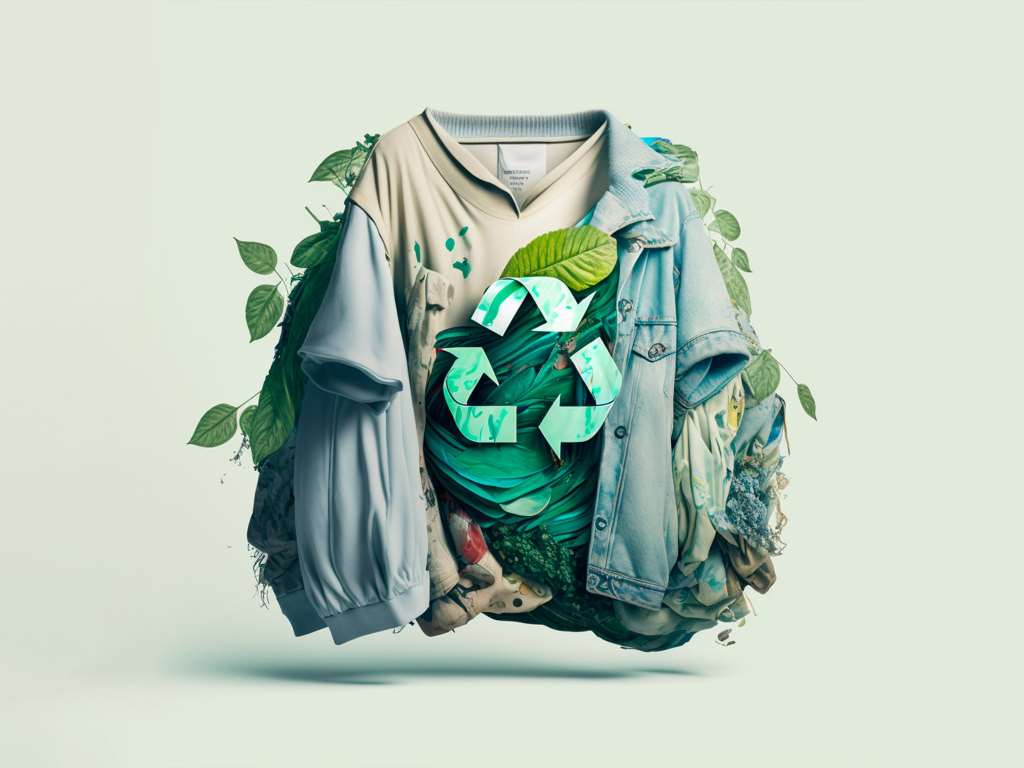
The cotton shirt, a wardrobe staple for generations, is facing a new challenge: man-made fibers (MMF). This shift in the global shirt industry is driven by a confluence of factors – functionality, affordability, and ever-evolving fashion trends.
A balancing, cost vs performance
Cotton reigns supreme in breathability and comfort, but its price fluctuations and water-intensive cultivation cast a shadow. Studies reveal that MMF currently holds a staggering 70% share in global fiber consumption. "Consumers are willing to pay more for a shirt that offers superior performance and comfort," says Sarah Jones, a textile analyst. Brands are responding with a spectrum of options catering to diverse budgets and needs. Synthetic fibers, generally cheaper to produce, are a boon for fast fashion and budget-conscious consumers. Fast fashion giant H&M exemplifies this by actively incorporating recycled polyester into their clothing lines, touting affordability alongside sustainability benefits.
Function reigns supreme
Beyond cost, synthetic fibers offer functionalities that cotton struggles to match. Analysts at Apparel Views highlight the growing demand for performance-driven textiles. Polyester and nylon blends, renowned for their wrinkle resistance, require minimal ironing – a major perk in today's fast-paced world. "Synthetic fibers offer features like wrinkle resistance, moisture-wicking, and durability," points out Faruk Hasan, President of the Bangladesh Garment Manufacturers and Exporters Association (BGMEA). These features are particularly sought after in activewear and performance shirts, but are increasingly finding their way into everyday wear as well.
The rise of blends
While synthetics are gaining ground, pure polyester isn't the only story. Blended fabrics, particularly cotton-polyester mixes, offer a middle ground. Industry estimates suggest MMF already hold a significant 70% share of global fiber consumption. These blends combine the breathability of cotton with the wrinkle resistance and affordability of synthetics. The future likely lies in even more innovative hybrid fabrics that bridge the gap between comfort and functionality.
Regenerated cellulose fibers like rayon are gaining traction for being a natural alternative to synthetics while maintaining some of their functional benefits. Some studies indicate rayon has displaced wool in many important uses, including shirting, due to its affordability and comfort. Fashion trends also play a role. The rise of athleisure and activewear, with their focus on moisture-wicking and flexibility, has pushed up demand for synthetic fabrics designed specifically for performance. Patagonia, a leader in outdoor apparel, exemplifies this trend. Their ‘Capilene Cool Lightweight Shirt’ is made with a recycled polyester blend that prioritizes moisture-wicking and breathability, perfect for active pursuits.
A global landscape woven with diverse fabrics
The shift towards synthetics isn't uniform across the globe. The US market, for example, presents a complex picture. While synthetics dominate apparel consumption (around 75 per cent), cotton imports still hold a slight edge over man-made fibers. Rising oil prices, which impact synthetic fiber production, could temporarily swing the pendulum back towards cotton.
The European market shows a growing interest in sustainable alternatives. Regenerated cellulose fibers, like viscose rayon derived from wood pulp, are gaining traction due to their eco-friendly appeal. However, even in Europe, the demand for wrinkle-free and easy-care shirts is driving a rise in synthetic blends.
The future of shirt fabrics likely lies in innovation. Sustainable alternatives like Tencel, a wood-based fiber, are gaining traction. "We're seeing a growing interest in eco-friendly synthetics made from recycled materials," says Marie Dubois, a fashion designer specializing in sustainable clothing. The industry is also exploring new ways to improve the comfort and breathability of synthetics, potentially blurring the lines between natural and man-made fibers.
The cotton shirt may not be facing extinction, but the industry is clearly weaving a new narrative. Consumers seeking function, affordability, and sustainability will have a wider range of fabrics to choose from, ensuring a comfortable and stylish fit for the future.
A total of 39 Vietnamese garment and textile enterprises participated in the leading international trade fair for fashion and apparel procurement, Texworld New York City 2024.
Held from July 16-18, 2024, in New York, United States, this three-day fair attracted hundreds of suppliers and designers from the global textile and garment supply chain.
The Vietnamese enterprises showcased products featuring diverse and creative designs, with many items made from eco-friendly materials such as coffee and lotus fibers. Ambassador Dang Hoang Giang, Vietnam's permanent representative to the UN, expressed his admiration for the impressive presence of Vietnamese apparel products in New York City, which is recognised as one of the world's premier fashion centers.
Textile and garments are key export products for Vietnam having significant potential for market expansion. Ambassador Giang emphasised on the importance of approaching potential customers, staying abreast of fashion trends, and focusing on innovation to meet the demands of discerning markets like the US.
He also recommended, local associations and businesses enhance coordination with Vietnam’s representative agencies in the US, including the Permanent Mission of Vietnam in New York. This would help Vietnamese products gain a stronger foothold in the local market besides fostering new growth opportunities for the apparel industry and strengthening trade links between the two nations, he said.
A specialist in sorting and logistics for end-of-life apparel and footwear, Canadian company Debrand, has launched its first US textile sorting facility in Columbus, Ohio.
This new 32,000-sq-ft facility aims to enhance North America's textile recycling infrastructure by responding to increasing demands from brands and local governments for more sustainable disposal options. The facility features both automated and AI-enabled sorting equipment alongside traditional hand-sorting techniques.
Debrand already operates a similar facility in Vancouver, Canada, and subcontracts sorting operations from WM in Arizona and South Carolina. The company views Columbus as an ideal location due to its proximity to numerous well-known clothing brands, thus reducing shipping distances for processing.
Driven by interest from chemical recyclers and potential state textile EPR policies, Debrand expects the North American textile recycling market to grow. Currently, the region has limited facilities to process textile waste. However, the volume of garments produced each year is becoming insurmountable, says Amelia Eleiter, CEO and Co-founder of Debrand. She emphasises on the need for more regional solutions to address this issue at scale.
The US Government Accountability Office recently also highlighted the need for innovating textile recycling in the city to make the process more effective and accessible. Debrand has already diverted over 4.5 million pounds of textile waste from disposal in the last 18 months, working directly with brands to manage unsellable items and find buyers for resale markets.
Debrand's Ohio facility will combine human sorters with advanced technology, including AI-powered systems that collect data on items and brands to determine the best recycling or resale options. The company is also exploring partnerships in chemical recycling, such as a pilot with Eastman to recycle 5,000 pounds of textiles into recycled fiber.
Waste from the global apparel industry leaks about millions of tons of plastic in the environment every year, says a study conducted by the North Carolina State University
As per the study, the global apparel industry generated more than 20 million tons of plastic waste in 2019, with about 40 per cent potentially leaking into the environment, leading to a process known as 'plastic leakage.'
Richard Venditti, Professor -Paper Science and Engineering, NC State and Co-author of the study, notes, a significant portion of the plastic waste leaking into the environment comes from discarded clothes, particularly synthetic apparel. Additionally, waste is generated during manufacturing, packaging, and transportation, as well as from microplastics released into water during washing.
In 2019, synthetic apparel was identified as the largest source of plastic waste, accounting for 18 million tons. Researchers estimated that approximately 8.3 million tons of this waste may have leaked into the environment. Cotton clothing contributed 1.9 million tons of plastic waste, while the remaining 0.31 million tons came from other fibers. Unlike synthetic apparel, the plastic waste from cotton and other fibers primarily originated from packaging materials.
The study also finds that the location of apparel sales is not necessarily where plastic waste leaks into the environment. For apparel sold in high-income countries like the United States and Japan, most pollution occurred in lower-income countries where these clothes might end up in the secondary market. This points to a significant issue with the consumption habits in higher-income countries.
The study concludes by urging the apparel industry to adopt a more circular framework, emphasising recycling and reducing waste. It also recommends increasing the use of renewable, non-synthetic textiles.
The paper, titled ‘The global apparel industry is a significant yet overlooked source of plastic leakage,; appears in the open-access journal Nature Communications. The corresponding author is Anna Kounina of Quantis, with co-authors including Jesse Daystar, Sophie Chalumeau, Jon Devine, Roland Geyer, Steven T Pires, Shreya Uday Sonar, and Julien Boucher.
Global sports company Puma aims to expand its textile-to-textile recycling innovation, Re:Fibre by producing millions of replica football jerseys containing a minimum of 75 per cent recycled textile waste and other waste materials.
Starting from the 2024/25 season, Puma's football replica jerseys, including those for the Euro and Copa América tournaments, will be made using Re:Fibre.
Building on the success of the 46,000 Re:Fibre jerseys produced in 2023, Puma aims to reduce textile waste and decrease reliance on plastic bottles for recycled polyester products.
To achieve this, the brand is exploring various methods of recycling polyester, such as thermo-mechanical and chemical recycling techniques, to significantly enhance its capacity for recycling textile waste.
The brand aims to create 100 per cent of its polyester products from textile waste, says Anne-Laure Descours, Chief Sourcing Officer, Puma. It also plans to various activities at its New York flagship store, coinciding with the launch of the AC Milan and Manchester City home replica kits.
On July 20, 2024, the brand will sell one hundred limited edition badges, upcycled from match-worn jerseys by Jack Grealish and Christian Pulisic in stores.
On July 21, 2024, Andrew Burgess, Voice of RE: Generation, Puma will lead three upcycling workshops, teaching fashion enthusiasts techniques to customise and upcycle clothing to extend its lifespan.
India’s leading textile company Sportking India has launched a new technology called Controlled Release Enhanced Mating Interruption Technology (CREMIT) to support farmers boost their cotton production under the ‘San-Vardhan’ (cotton you can trust) initiative.
Launched in partnership with ATGC Biotech, the technology helps protect the cotton crop from Pink Bollworm (PBW) attack. It is currently being implemented across 2,000 acre in three districts of Punjab and Haryana.
Munish Avasthi, Managing Director, Sportking India, says, the CSR project San-Vardhan with CREMIT technology helps supports cotton farmers in North India by addressing the issue of PBW attack.
Dr. Baljinder Saini, Executive Director, Reviving Green Revolution Cell, the implementing partner for this project adds, similar initiatives need to be launched in other cotton growing areas in Central and South India.
A manufacturer of diversified range of textiles, Sportking India caters to the evolving demands of the weaving and knitting industry in India.

